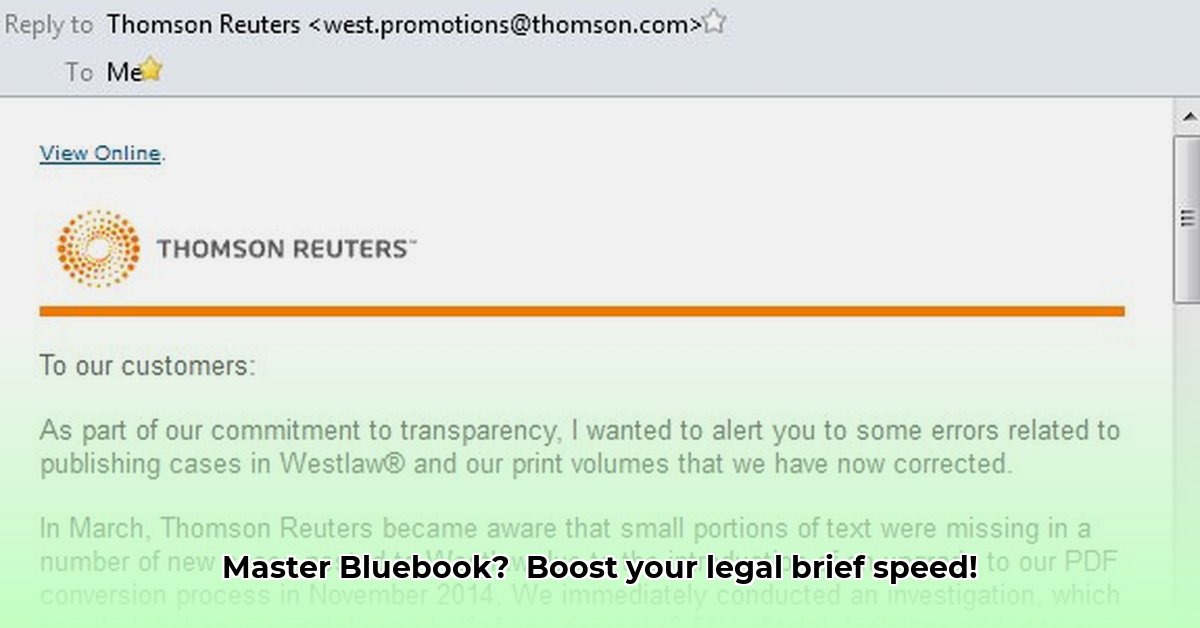
Legal citation can be a significant hurdle in legal writing. This guide clarifies how to cite court documents efficiently and accurately using either the detailed Bluebook style or the simpler Electronic Case Files (ECF) numbers. We'll compare both methods, outlining their advantages and disadvantages to help you select the best approach for your specific needs. By the end, you'll streamline your legal briefs, ensuring accuracy and readability. For a deeper dive into Bluebook rules, check out this helpful resource: Bluebook guide.
Bluebook Docket Entry: A Practical Guide
The Bluebook is the gold standard for legal citations. Its consistent formatting facilitates easy access to referenced cases, essential for legal research and argumentation. However, strict adherence can lead to lengthy citations that disrupt the flow of your writing. This section helps you master Bluebook docket entries, balancing precision with efficiency.
Understanding Bluebook Requirements
A standard Bluebook docket entry includes detailed case information: court, case name, volume number, reporter (e.g., Supreme Court Reporter, Federal Reporter), page numbers, and date. All these details are crucial for accurate referencing.
Step-by-Step Bluebook Citation
- Gather Information: Collect all essential details: court, case name, volume and reporter, specific page(s), and decision date. Accuracy in this initial step is paramount.
- Format Meticulously: Arrange these details according to the Bluebook's formatting rules (punctuation, capitalization, etc.). Consistency is key.
- Verify Accuracy: Double-check all information before proceeding. Errors can undermine the credibility of your legal brief.
- Maintain Consistency: Apply the same rigorous approach to every citation in your brief to ensure professional presentation and reader comprehension.
Beyond the Bluebook: The ECF System
Many courts use Electronic Case Files (ECF), assigning a unique ECF number to each document. This allows for simplified citation, reducing length and improving readability.
ECF Citation: Advantages and Disadvantages
| Feature | Advantages | Drawbacks |
|---|---|---|
| Readability | Shorter citations; smoother reading experience | Reduced detail; requires contextual understanding |
| Accuracy | Generally accurate, easy to verify | System malfunctions can hinder retrieval |
| Retrievability | Easy with direct ECF access | Limited to the court's specific ECF system |
| Bluebook Compliance | Not strictly Bluebook compliant (unless court-approved) | May not be suitable for all publications or courts |
Choosing the Right Citation Method: A Strategic Approach
The optimal citation method depends on several factors:
- Court Rules: Always adhere to the specific rules of the court or publication.
- Intended Audience: Judges may prefer concise citations, while colleagues might appreciate more detail.
- Context: A central case requires a full Bluebook entry; supporting evidence might allow for an ECF number.
- Clarity vs. Brevity: Balance comprehensive information with a smooth reading experience. Don't sacrifice clarity for brevity.
Improving Citation Efficiency: Practical Tips
Several strategies can simplify the citation process:
- Utilize Citation Software: Leverage software specifically designed for legal citations to automate formatting, identify errors, and save time.
- Develop an Internal Style Guide: Ensure consistency by creating an internal style guide for your citations.
- Meticulous Proofreading: Always thoroughly proofread your citations to eliminate errors.
- Peer Review: Have a colleague review your work for errors you might have overlooked.
How to Choose Between Bluebook and ECF Citation Styles: A Decision Tree
This decision tree helps determine the most appropriate citation style:
- Jurisdiction: Does the court primarily use ECF? If so, ECF is suitable for internal references; otherwise, use the Bluebook.
- Document Type: Is it a formal filing (appellate brief, publication, academic work)? The Bluebook is generally required. For internal memos, ECF may suffice.
- Audience: Is the audience familiar with the case and ECF system? If so, ECF might be acceptable. A broader audience generally requires the Bluebook.
Comparing Bluebook and ECF: A Summary
| Feature | Bluebook | ECF System |
|---|---|---|
| Universality | High; recognized across US courts | Low; primarily in federal courts using ECF |
| Clarity | Excellent; highly detailed and specific | Good; concise but may lack context for outsiders |
| Efficiency | Low; lengthy citations | High; very brief and easy to locate |
| Complexity | High; requires training | Low; easily learned |
This guide provides a comprehensive framework for choosing and implementing effective legal citation strategies. Remember to consult your court's individual rules for specific requirements and always prioritize clarity and accuracy.
⭐⭐⭐⭐☆ (4.8)
Download via Link 1
Download via Link 2
Last updated: Sunday, April 27, 2025